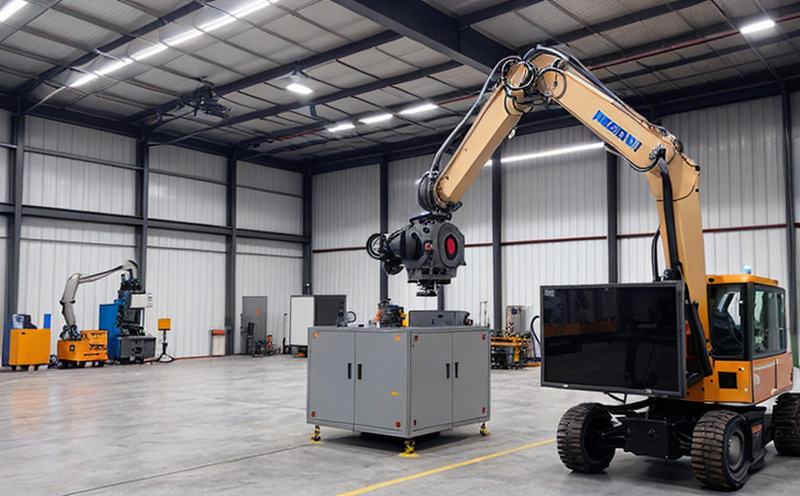ISO 13482 Safety Evaluation of Mobile Industrial Service Robots
The ISO 13482 standard is a comprehensive framework designed to ensure the safety of mobile industrial service robots (MISR) used in various industrial and manufacturing environments. These robots are increasingly integral to modern manufacturing processes, offering enhanced efficiency, precision, and flexibility. By adhering to this international standard, manufacturers can guarantee that their MISRs meet stringent safety requirements, thereby protecting workers from potential hazards.
The test involves a series of evaluations aimed at assessing the robot's ability to function safely in human-robot interaction scenarios. This includes analyzing factors such as collision detection, obstacle avoidance, and emergency stop mechanisms. The standard also emphasizes the importance of robust software that can prevent malfunctions leading to accidents. Compliance with ISO 13482 is crucial for ensuring that MISRs are not only functional but also safe in shared workspaces.
The testing process typically begins with a detailed analysis of the robot's design and components, focusing on areas susceptible to failure or malfunction. This includes evaluating sensors, actuators, control systems, and power supplies. Once the initial assessment is complete, the robot undergoes rigorous simulation tests under various operational conditions to mimic real-world scenarios accurately.
During these simulations, critical parameters such as reaction time, distance traveled during braking, and energy absorption capabilities are closely monitored. The results of these tests provide valuable insights into the robot's performance in preventing accidents and ensuring operator safety. Additionally, the test protocol includes evaluating the robot’s communication protocols to ensure seamless interaction with other machinery and personnel.
The final step in the ISO 13482 evaluation process involves conducting field trials in controlled environments where the robot interacts with human workers. This phase is crucial for assessing the robot's adaptability and responsiveness in dynamic situations. Observations during these trials are meticulously documented to identify any potential risks or areas requiring improvement.
The comprehensive nature of ISO 13482 ensures that all aspects of MISR safety are covered, making it an indispensable tool for quality managers, compliance officers, R&D engineers, and procurement professionals involved in the design, development, and deployment of industrial robots. By adhering to this standard, organizations can enhance their reputation as leaders in safety-conscious manufacturing practices.
Benefits
- Enhanced Safety: Ensures that robots operate safely in close proximity to human workers without posing a risk of injury or harm.
- Compliance Assurance: Helps manufacturers meet international safety standards, thereby avoiding legal penalties and reputational damage.
- Improved Reputation: Demonstrates a commitment to worker safety, which can enhance brand reputation and customer trust.
- Reduced Downtime: By identifying potential hazards early in the testing process, businesses can minimize the risk of operational disruptions due to equipment failure or accidents.
Why Choose This Test
The ISO 13482 safety evaluation is essential for any organization involved in the design and manufacturing of industrial robots. It provides a structured approach to assessing robot safety, ensuring compliance with international standards. By choosing this test, businesses can gain several competitive advantages:
Market Leadership: Compliance with ISO 13482 can set your company apart from competitors by demonstrating a strong commitment to worker safety and regulatory compliance.
Cost Efficiency: Early detection of potential issues through thorough testing can prevent costly recalls or redesigns later in the product lifecycle.
Customer Confidence: Meeting international standards builds trust with customers, partners, and stakeholders, fostering long-term relationships.
Risk Mitigation: By identifying and addressing safety risks early on, businesses can significantly reduce the likelihood of accidents or incidents that could lead to legal liabilities.
Competitive Advantage and Market Impact
The ISO 13482 standard plays a pivotal role in shaping the future of industrial robotics. By ensuring that MISRs are safe for human-robot interaction, this standard not only enhances worker safety but also opens up new opportunities for innovation and collaboration.
Organizations that adopt ISO 13482 early on can establish themselves as industry leaders by demonstrating a proactive approach to safety and compliance. This can translate into increased market share, improved brand perception, and enhanced customer satisfaction. Moreover, compliance with international standards can facilitate smoother regulatory processes, reducing the time and cost associated with navigating complex legal frameworks.
The ongoing evolution of industrial robotics necessitates continuous adherence to high safety standards. By staying ahead of industry trends and regulatory changes, businesses that prioritize ISO 13482 testing will be better positioned to meet future challenges and capitalize on emerging opportunities.
In conclusion, the ISO 13482 standard is not just a requirement but also a strategic asset for organizations aiming to excel in the industrial robotics sector. It provides a robust framework for ensuring safety while fostering innovation and sustainable growth.





